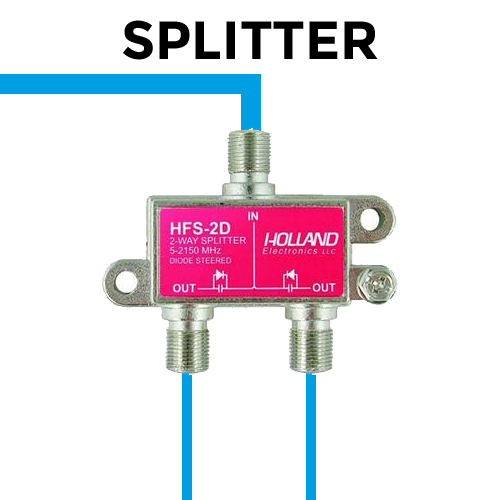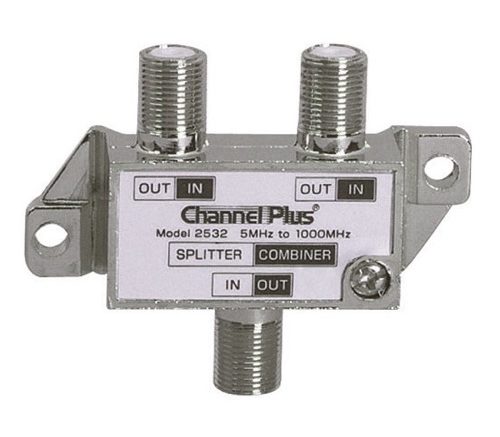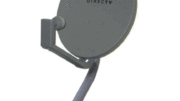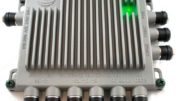Taking a look at this Channel Plus Two Way Splitter/Combiner you might be confused. Is it a splitter or a combiner? I mean, how can it be both, right?
It’s not really clever engineering…
The truth is that unless you engineer it differently, every splitter can also be used as a combiner. In most RF distributions, signals are always passing back and forth in two directions. A splitter or combiner would have to be specially engineered not to be bidirectional.

See, a combiner is like a funnel. You can pour two things into it at the same time and they will just get all mixed together without a whole lot of concern. Generally, though, the two sources don’t get mixed. In other words, look at the diagram above. The blue signal doesn’t interfere with the pink signal. It just gets mixed together to form the purple signal coming out of the combiner port.
This principle is called port isolation. Most of the time it’s a good thing because if the signals did flow back on each other (for example if the blue signal contaminated the pink signal) that could cause interference. There are a few cases when you don’t want this, however.
When you’re using ethernet over coax, such as the way DIRECTV and DISH do it for their latest and greatest systems, you actually want that network signal to flow from port to port. So, splitters like DIRECTV’s green-labeled SWM splitters are designed to let certain kinds of signals jump from port to port when needed.
Ready for the next mind game?

When you use a splitter/combiner to split a signal, half goes one way and half goes the other way. That makes sense, right? The signal strength coming out of the output ports is roughly half what the input port strength is. There’s also a little bit of loss caused by the electronics in the splitter. That all makes sense, right?
Here’s what will blow your mind.
When you combine two signals, you don’t usually get double the signal strength. You get the same signal strength, less a little bit for the electronics in the splitter. This is because the two input signals are different and don’t interfere with each other. In a case like multiple antennas where you are combining the same signals, you do get more signal strength, but again it’s not quite double because of the electronics inside.
Where to get the best splitters and combiners
If you’re looking for all the doodads that make commercial RF distribution work, look no further than SolidSignal.com, where you can find literally every kind of splitter and combiner imaginable. Splitters and combiners are customized to work in a lot of different situations and no matter what your particular situation is, you’ll find the splitter or combiner you need at the best price, always with free tech support!





